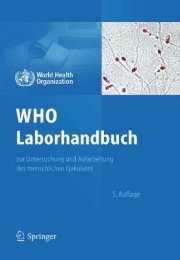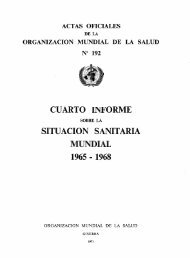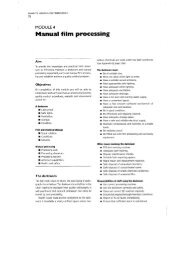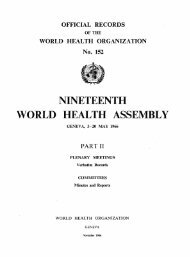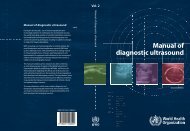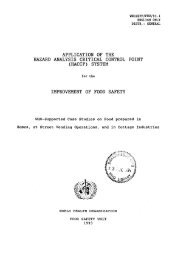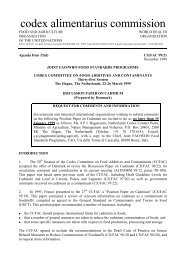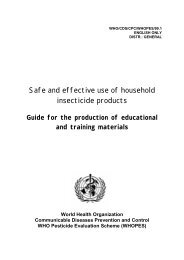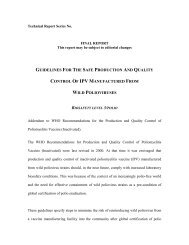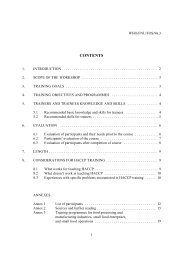N uadThaiTherapy - Multiple Choices - World Health Organization
N uadThaiTherapy - Multiple Choices - World Health Organization
N uadThaiTherapy - Multiple Choices - World Health Organization
You also want an ePaper? Increase the reach of your titles
YUMPU automatically turns print PDFs into web optimized ePapers that Google loves.
Benchmark training curriculum for Nuad Thai<br />
• use of oils for the treatment of inflammation, muscle sprains and<br />
tendinitis, procedures and benefits of aromatherapy, and the extraction of<br />
essential oils from herbs;<br />
• meaning, concept and classification of Thai spaya and the role of Nuad<br />
Thai in Thai spaya;<br />
• philosophy, concepts and practice of basic meditation;<br />
• procedures, benefits and precautions of ruesi dud ton (Thai traditional<br />
stretching exercises).<br />
Law/ethics, social sciences, clinical record-keeping<br />
A typical Type I Nuad Thai programme also addresses:<br />
• professional regulations;<br />
• national health system;<br />
• clinical record-keeping;<br />
• practice management;<br />
• activities to promote teamwork;<br />
• principles of communication;<br />
• cultural sensitivity;<br />
• professional ethics;<br />
• art of service.<br />
Clinical training<br />
In a typical Type I Nuad Thai programme each student practices Nuad Thai<br />
under supervision at field sites in at least 100 cases of specific symptoms and<br />
diseases. These cases include all of the following symptoms/conditions:<br />
• patients with pain in the head area;<br />
• patients with pain or sprains in the neck;<br />
• patients with pain, stiffness or numbness in the shoulder or scapula;<br />
• patients with pain or sprains in the arm, elbow, wrist or hand;<br />
• patients with pain, sprains or numbness in the back, waist, sides of the<br />
torso or abdomen;<br />
• patients with pain, stiffness or sprains in the hip joint, hip area or lower<br />
back;<br />
• patients with pain, sprains, stiffness or numbness in the knee;<br />
• patients with pain, sprains, stiffness or numbness in the leg, ankle or feet;<br />
• paralysed or paretic patients;<br />
• women before and after childbirth.<br />
9



